The year that Genoa devoted to Baroque art, fostering several exhibitions of considerable depth in the city and outside (it will be worth mentioning at least the Superbarocco project at the Scuderie del Quirinale in Rome, the exhibition on Domenico Parodi at Palazzo Nicolosio Lomellino, which was as rigorous as it was innovative, and the I protagonisti program that s’held throughout the Ligurian capital, culminating with the exhibition The Shape of Wonder at Palazzo Ducale), continues to offer the general public, enthusiasts and scholars new and rare opportunities for in-depth study. As a new edition of Rolli Days, the now traditional event that opens the doors of the ancient palaces of the Republic of Genoa to all, began in the city, the exhibition Senza Tempo. A Dialogue between Fiasella and the Painters of Palazzo Negrone, an exhibition that kicks off the activities of Goldfinch Fine Arts, a new and young gallery specializing in Italian and European art between the sixteenth and eighteenth centuries, based in the Palazzo of Lazzaro and Giacomo Spinola. To introduce themselves to the public and insiders, Goldfinch’s owners, Luigi Pesce and Clemente Zerbone, have chosen a very high-profile departure: an exhibition reduced in size but with a high scientific depth, which benefits from the presence of works never before exhibited to the public and some new ones, and which revolves around the discovery of a painting by Domenico Fiasella, the Death of Adonis, very well known at the time it was executed, but of which traces had long been lost.
The work of Pesce and Zerbone, assisted by a team of experts on the Genoese seventeenth century (Piero Boccardo, Gabriele Langosco, Giacomo Montanari, and Tiziana Zennaro), led to the identification of the painting and the staging ofa useful exhibition to further investigate the role and relationships of the great Sarzano painter, who was the protagonist in the past of two notable monographic exhibitions curated by Piero Donati, namely the one in Genoa in 1990 and the one in Sarzana in 2008, thanks to which it was definitively highlighted Fiasella’s relevance to the artistic and cultural events of his time, especially as a fundamental intermediary in Liguria of the innovations that were taking shape in Rome in the early 17th century. The discovery of the Death of Adonis provided the impetus for an exhibition that, despite the small size of an event that aligns twelve paintings over three rooms, develops through intriguing interweavings: Fiasella’s relations with the Centurione commission, for whom the Death of Adonis was painted, and then his activity as a fresco painter assessed in comparison with that of Giovanni Battista Carlone who is author of the frescoes in the gallery of Palazzo Negrone and of whom the exhibition presents three interesting paintings, arranged right under the ceiling he painted, to continue with a lunge on the personalities of Gioacchino Assereto and Giovanni Maria Bottalla, authors of the decoration of the drawing room on the piano nobile of Palazzo Negrone, and also present in the exhibition with rare works never before presented to the public.
The exhibition starts precisely from the rediscovered painting by Fiasella: well known to the sources (in Raffaele Soprani’s Lives it is the Venus weeping for the unfortunate death of her beloved Adonis) and to scholars (it will suffice to mention the evocative essay by Franco Vazzoler who, in the 1990 exhibition catalog, cited it while trying to reconstruct, based on ancient descriptions, the appearance of anotherother missing Centurione canvas, having as its subject Venus and Mars), and first published in 1995 by Mary Newcome-Schleier, had been painted for Agapito Centurione probably after 1626, perhaps on the occasion of the marriage between the patron and Geronima Imperiale, as the very young and promising scholar Gabriele Langosco argues in the entry. The image coincides perfectly with the description appearing in a 1707 inventory of Cristoforo Centurione’s collection, which mentions a “fable of Adonis pierced, and lying on the ground at the mouth ofa cave with a dog beside him, Venus fainting, and supported by two women, and a naked putto beside her, who hands water in a scudelet, and Cupid, who hands in the act of essibire some flowers to one of the two women.” It is worth noting the existence of a painting identical to the one exhibited at Palazzo Negrone, but of much inferior quality, kept at the National Museum in Warsaw, where it is catalogued with generous attribution to Alessandro Turchi (it has, moreover, already happened in the past that the Orbetto and the Sarzana were confused: this is the case with the Louvre’s Samson and Delilah , a work about whose Fiasellesque autography there is no longer any doubt today). The discovery of which the Genoese exhibition gives an account cannot therefore do other than entail the consequent assignment of the status of copy to the Polish painting. A copy, it should be added, of similar dimensions to those mentioned in the inventory, which correspond to about 161 x 242 cm, and a copy in any case of a good standard, as the iridescence of the draperies and some chiaroscuro passages of the figures in the foreground attest, and with some variation from the’Negrone Palace work (the drape on which Venus sits, for example, undergoes a change in color), and which consequently takes on great significance as it becomes an inescapable certificate of the fame that Fiasella’s painting must have enjoyed in ancient times.
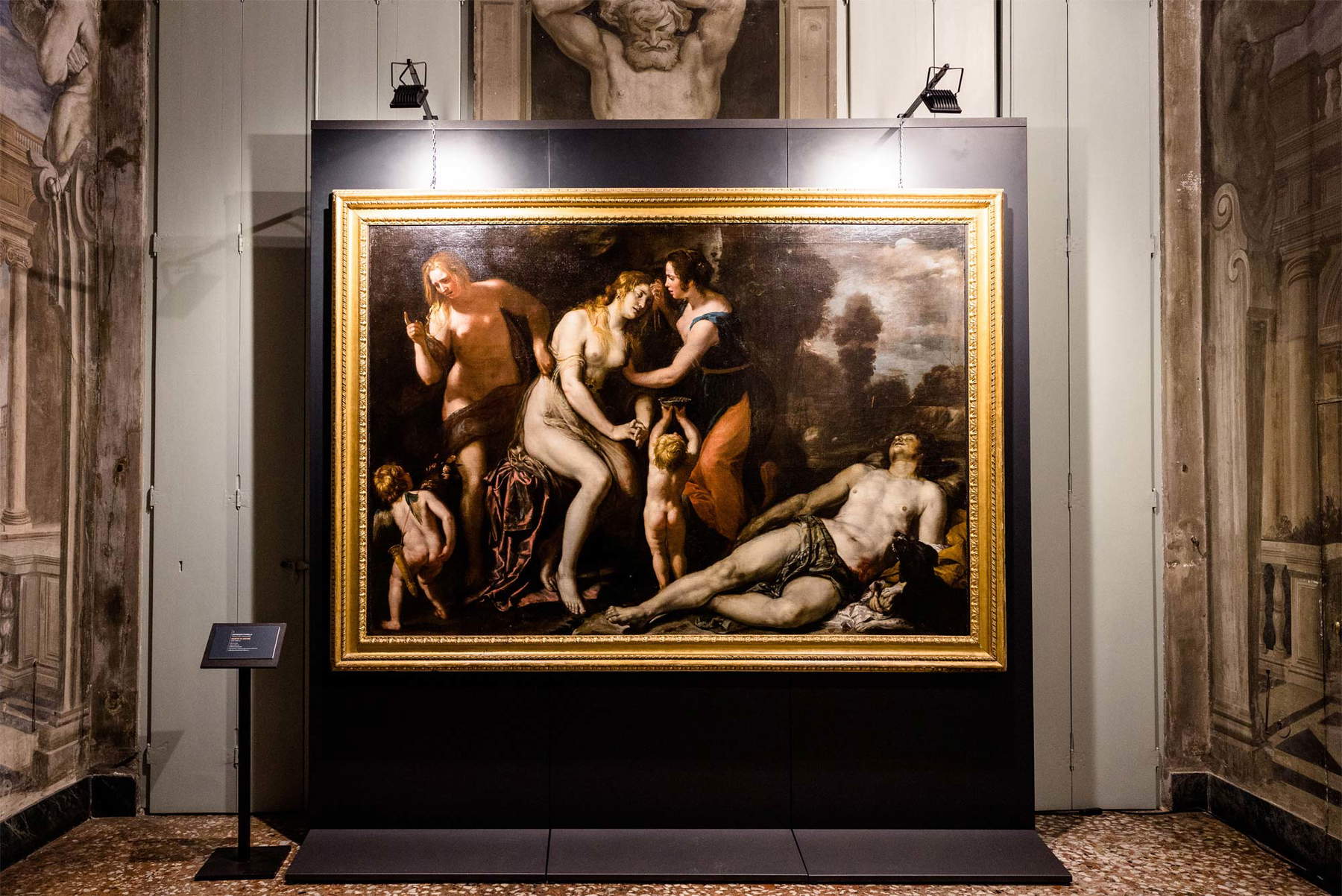
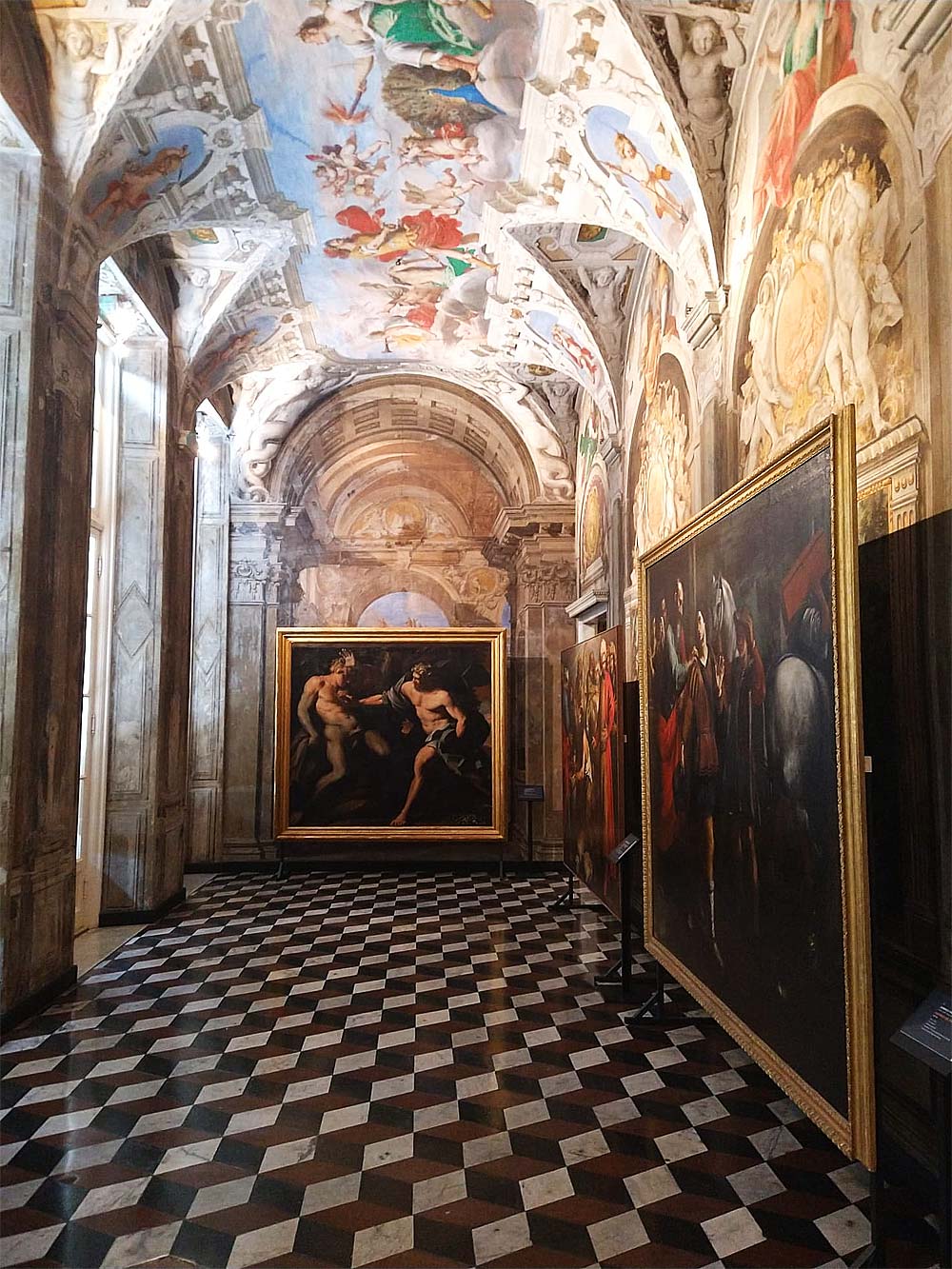
Langosco calls the painting an “absolute apex in Fiasella’s production”: thanks to the fine passages of light, the skillful transparencies of the veil that envelops Venus’ nude body, the strength of the chiaroscuro, as well as the engaging orchestration of the composition, constructed with marked narrative verve . The discovery of this “absolute summit” also provided an opportunity to research the collection of Agapito Centurione and his son Cristoforo, once housed in the family palace on today’s Via del Campo, and later dispersed: a picture gallery that, as reconstructed by Piero Boccardo in his catalog essay, was started by Agapito probably always as a result of his marriage (his father-in-law, Giovanni Vincenzo Imperiale, was among the major collectors of Genoa of his time), which was initially limited mainly to works by important local masters, and was later decisively expanded by Cristoforo. At the latter’s demise, the picture gallery numbered about two hundred paintings: in addition to Fiasella’s canvases, there were paintings by Antoon van Dyck, Giovanni Battista Castello, Giulio Cesare Procaccini, Valerio Castello, and Bernardo Strozzi. For example, Boccardo identifies Bernardo Strozzi’s Charity preserved today in the Palazzo Bianco as a painting mentioned in the Centurione inventory of 1707, just as it is suggested that Van Dyck’s Portrait of a Young Lady now in the Frick Collection in New York be identified with the “lady dressed in the antique style” mentioned in the document.
Fiasella’s painting is displayed in the living room frescoed by Bottalla and Assereto, where a still disputed Supper at Emmaus also arrives between Gioacchino Assereto (who was already given by Roberto Longhi, an attribution accepted almost unanimously) and Orazio de Ferrari, to whose hand the canvas was previously ascribed, and to whom Piero Donati attributes it, who, moreover, just this year devoted an interesting exhibition of little-known paintings or paintings from private collections to Orazio de Ferrari, held at the Accademia Ligustica in Genoa. The massive proportions, the heavy and full-bodied brushstrokes, the earthy tones, and even the connotations (at the Ligustica exhibition was presented a Head of a Saint very much resembling the pilgrim on the left) actually fit well with the production of the Voltri painter, while in favor of theattribution to Gioacchino Assereto are called into question by Tiziana Zennaro the expressive tension and the economy of gesture that bring the painting closer to the extreme phase of the Genoese artist’s production, as well as the similarities with types in other paintings, for example the Christ that appears in the Transito di san Giuseppe of Collezione Carige: is nevertheless undoubtedly one of the most fascinating paintings in the exhibition. On the other hand, a different kind of fascination emanates from Giovanni Maria Bottalla’s Prometheus , a work that appeared in 2017 on the antiquarian market (in a Boetto auction, card by Anna Orlando) and is now on public display for the first time: it is the charm of exceptionality, since rare are the works of this singular Savona painter, best known for two large canvases exhibited in what is in fact the conference room of the Pinacoteca Capitolina in Rome, the Joseph Sold by the Brothers and theMeeting of Esau and Jacob. The canvas exhibited in Genoa, according to Tiziana Zennaro, is close to the Joseph Sold by the Brothers and imposes itself on the visitor’s attention with the two corpulent figures, that of Prometheus and the man to whom he gives life (of great effect is the different texture of the epidermis of theman, pulsing with vivid colors where he is closest to the fire of the creator), which occupy the entire composition and which, steeped in Roman suggestions, beginning with Pietro da Cortona and Andrea Sacchi, bring us back to those painted in the vault of the drawing room in collaboration with Gioacchino Assereto.
Further comparisons are established between Giovanni Battista Carlone, whose Joseph Explaining Dreams to Pharaoh and The Finding of the Cup in Benjamin’s Sack, and Fiasella himself, featured alongside Carlone with the Departure and Return of the Prodigal Son, paintings published in 2018 by Marco Franzone and Giacomo Montanari, which are of inferior to the Death of Adonis that the public sees in the salon, and therefore executed with the assistance of the workshop, although the originality of invention and certain passages, such as the “the rich pictorial film, the soft transitions of light and the compact volumes of the figures” mentioned by Langosco, hint at the master’s hand. Carlone’s paintings are juxtaposed in the catalog by Montanari with the paintings of the vault of the Negrone Gallery, under which they are exhibited: evidence of this is “the expressive charge of the complexions and the ringing of the hues,” as well as the “chromatic and material preciousness” and the physiognomic similarities. The ideal comparison between Carlone and Fiasella, as mentioned above, also concerns their activities as fresco painters, and part of Montanari’s full-bodied essay is dedicated to this sort of tussle. affixed to Fiasella (and in regard to which the Genoese art historian rightly points out that for the Sarzanese, fresco painting did not constitute a dominant activity in the overall economy of his work), recalls how the two, who were among the most eminent painters of Genoa at the time, shared the market: Fiasella was left with the leadership of easel painting, while Carlone, also on the strength of the experience of his older brother Giovanni, set up, Montanari writes, “an extremely effective and profitable ’serial’ line of production,” which did not prevent him from “acquiring those characteristics of a glance toward the natural, of characterization in drawing and robustness in color” which can also be admired in the frescoes of Palazzo Negrone and in the paintings in the exhibition, and guaranteed him, from the mid-seventeenth century onward, a sort of monopoly of the Genoese fresco painting market, at least until the star of Domenico Piola emerged, the only one who would be able to contend with him for supremacy.
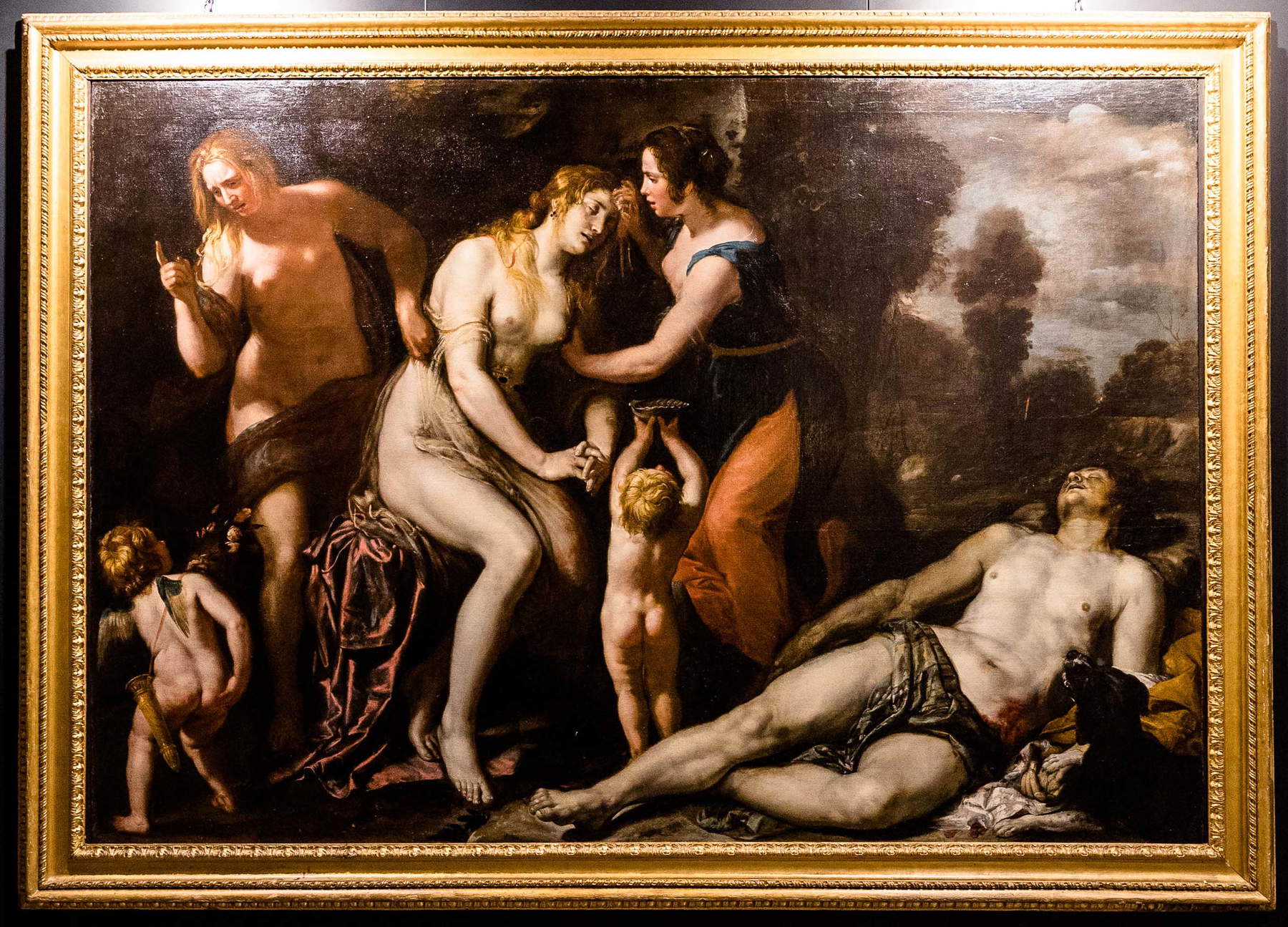
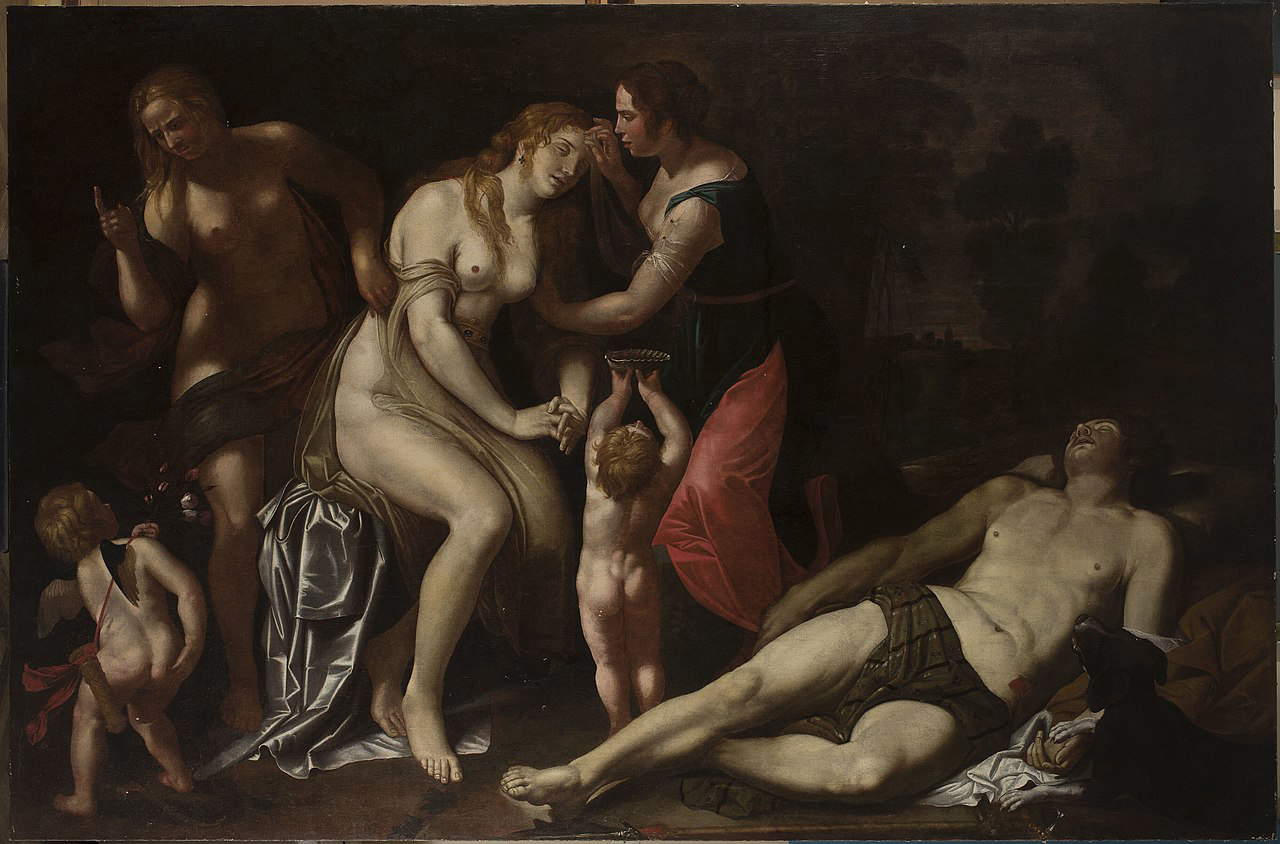
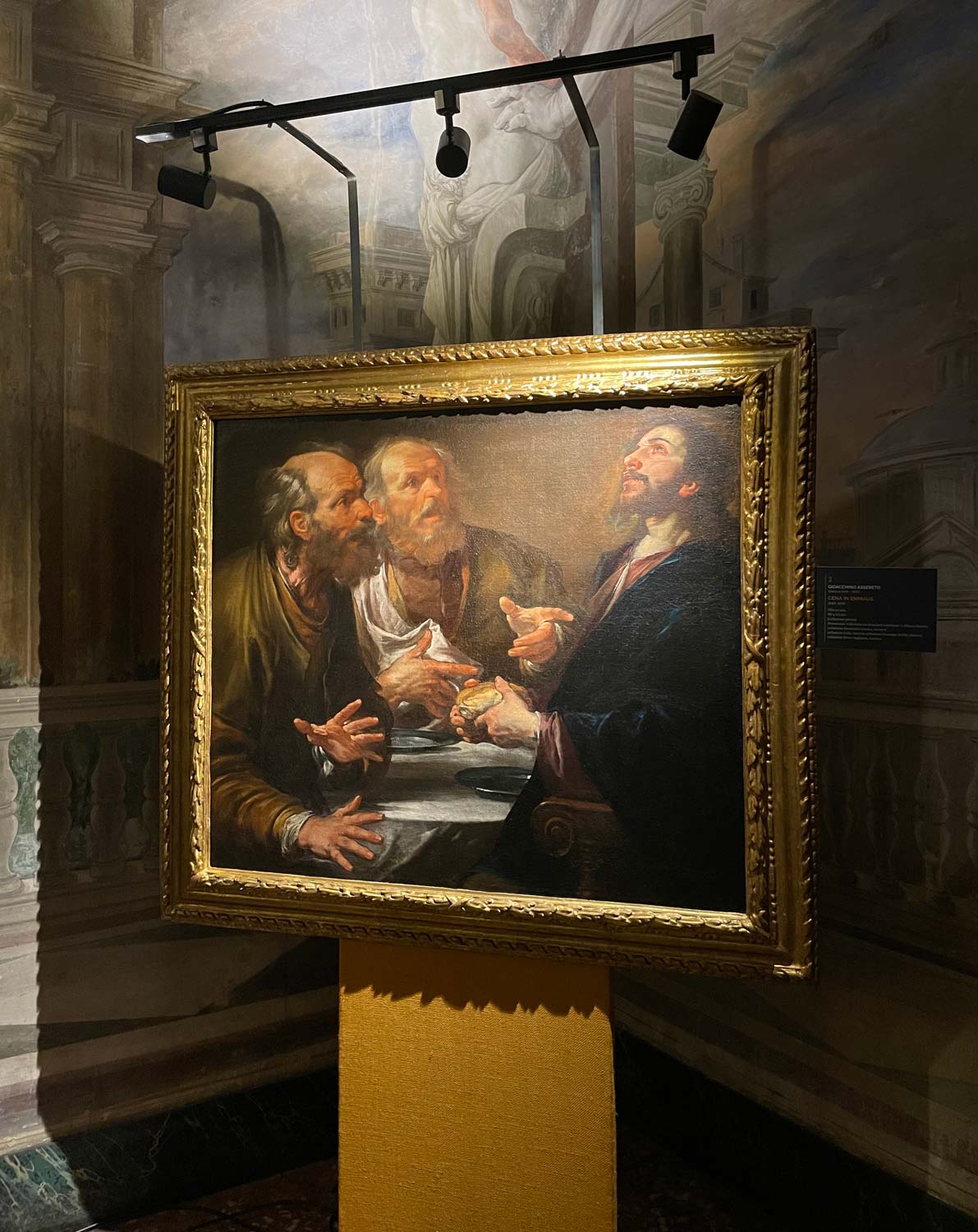
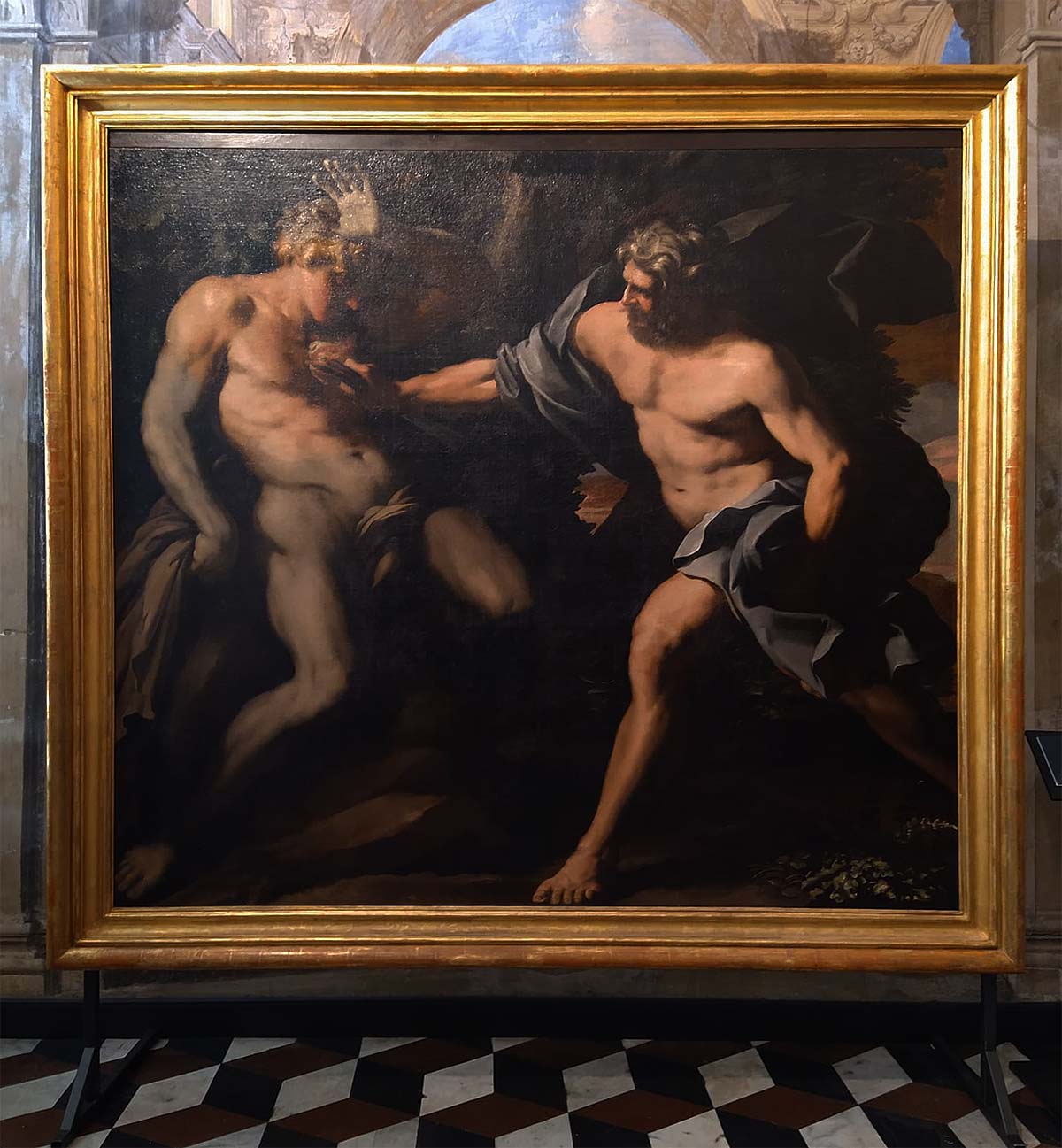
The exhibition at Palazzo Negrone allows time to admire one last, rare painting by Domenico Fiasella, Hector’s Farewell, which appeared on the market in 1991 and was published by Alessandro Morandotti four years later, only to return undisturbed to the private collection that houses it: for this painting, too, Timeless represents the first opportunity for public exhibition. The subject is not the most common, and also for the possibility of admiring a testimony to this iconography the exhibition is well worth a visit: it depicts the moment in which the Trojan hero Hector says goodbye to his wife Andromache, in tears as she is forewarned of his destiny, before participating in the final confrontation with his rival Achilles. Based on stylistic tangencies with the works painted by Fiasella for Ansaldo Pallavicino, Langosco situates Hector’s Fare well in the 1740s, highlighting the treatment of the male faces, marked by “a full-bodied and fraternal brushstroke, which becomes liquid and loose in the definition of the hair,” and which recalls the same free and fat brushstrokes of artists such as Luciano Borzone and Orazio de Ferrari.
The visit ends with four other rare works by the exhibition’s protagonists. We begin by admiring the imperious, sour and severe image of Gioacchino Assereto’s Lamba Doria, an ideal portrait of the commander who distinguished himself in the 13th century for his victory over the Venetians in the Battle of Curzola in 1298: another work offered to the public for the first time, in ancient times it was part of a cycle of portraits of the ancestors of the Doria family that also included the portrait of Oberto Doria and that of Pagano Doria. However, that of Lamba is according to Tiziana Zennaro the most intense and best preserved: moreover, it was restored just this year, by Antonio Silvestri. By Giovanni Battista Carlone it is possible to see a Tobias restoring sight to his father, an interesting early work by the painter who would later specialize in wall painting: the temporal collocation is also here on a stylistic basis, and memory in this case recurs to the counterpart painting in the Palazzo Bianco, in which the scene is identical to the one Carlone takes up in this one from a private collection, although the latter appears with a different cut, that is, with half-figures instead of whole figures as in the painting in the Strada Nuova Museums. It closes, finally, with two pinnacles of Assereto’s production, the Marsyas Flayed by Apollo and the Medea Rejuvenating Heson: the exhibition is an opportunity to see two sharp ones by the Genoese painter, similar in temperament, looseness, tone and visual power (and, in the case of the Marsyas, also in facial types) to one of Assereto’s masterpieces, the Death of Cato also preserved at Palazzo Bianco.
Those who would like to visit the exhibition should hurry: for organizational reasons, the duration is only one week, from October 15 to 23, and since this is an event that, although accessible to the public, is nonetheless private in nature, reservations are mandatory by emailing info@goldfinchfinearts.com. On the other hand, those who cannot or will not be able to will still be able to count on the full-bodied catalog, which deserves special mention also because it is a rare occurrence for a debut gallery to offer itself for the first time to the public and insiders with a publication as solid and dense as the one that accompanies Senza tempo. If, then, this is the quality of the debut, from a gallery that, like Goldfinch Fine Arts, presents itself to the world with an extremely significant find, with a survey of rare and important works, with such a dense catalog, making use of the collaboration of some of the leading experts of the period of reference, and offering the public the chance to admire works that are rarely accessible and moreover inserted in a convincing and fruitful dialogue with the context that hosts them, expectations for the continuation of the activities of the young Genoese gallery cannot but be high. The debut, therefore, has been promoted with full marks, with the certainty that the world of ancient art has been enriched by a new reality that will continue to distinguish itself in the future, providing ideas for work and reflection and material for advancing knowledge, just as it was for Senza Tempo, an exhibition that with elegance and rigor allows us to further extend our gaze on the year of the Genoese Baroque.
Warning: the translation into English of the original Italian article was created using automatic tools. We undertake to review all articles, but we do not guarantee the total absence of inaccuracies in the translation due to the program. You can find the original by clicking on the ITA button. If you find any mistake,please contact us.